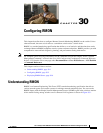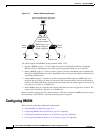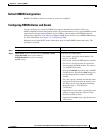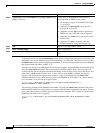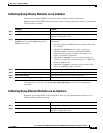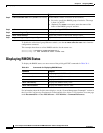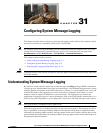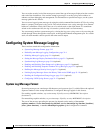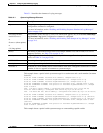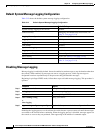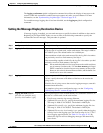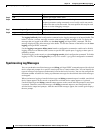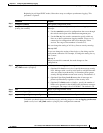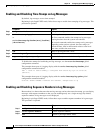
CHAPTER
31-1
Cisco Catalyst Switch Module 3110 and 3012 for IBM BladeCenter Software Configuration Guide
OL-12189-01
31
Configuring System Message Logging
This chapter describes how to configure system message logging on the switch. Unless otherwise noted,
the term switch refers to a standalone switch and to a switch stack.
Note For complete syntax and usage information for the commands used in this chapter, see the Cisco IOS
Configuration Fundamentals Command Reference, Release 12.2 from the Cisco.com page under
Documentation > Cisco IOS Software > 12.2 Mainline > Command References.
This chapter consists of these sections:
• Understanding System Message Logging, page 31-1
• Configuring System Message Logging, page 31-2
• Displaying the Logging Configuration, page 31-14
Caution Logging messages to the console at a high rate can cause high CPU utilization and adversely affect how
the switch operates.
Understanding System Message Logging
By default, a switch sends the output from system messages and debug privileged EXEC commands to
a logging process. Stack members can trigger system messages. A stack member that generates a system
message appends its hostname in the form of hostname-n, where n is a switch number from 1 to 9, and
redirects the output to the logging process on the stack master. Though the stack master is a stack
member, it does not append its hostname to system messages. The logging process controls the
distribution of logging messages to various destinations, such as the logging buffer, terminal lines, or a
UNIX syslog server, depending on your configuration. The process also sends messages to the console.
Note The syslog format is compatible with 4.3 BSD UNIX.
When the logging process is disabled, messages are sent only to the console. The messages are sent as
they are generated, so message and debug output are interspersed with prompts or output from other
commands. On stacking-capable switches, messages appear on the active consoles after the process that
generated them has finished. On non-stacking switches, messages appear on the console after the process
that generated them has finished.





